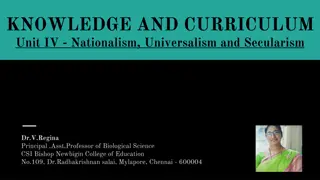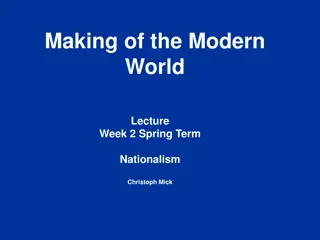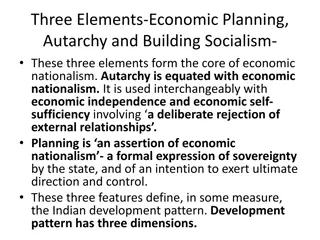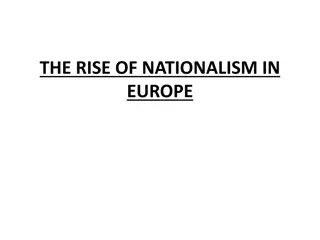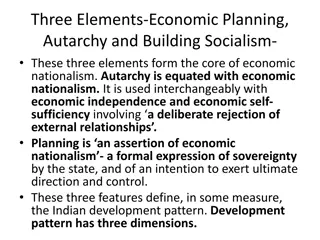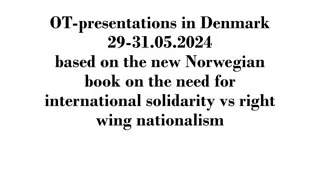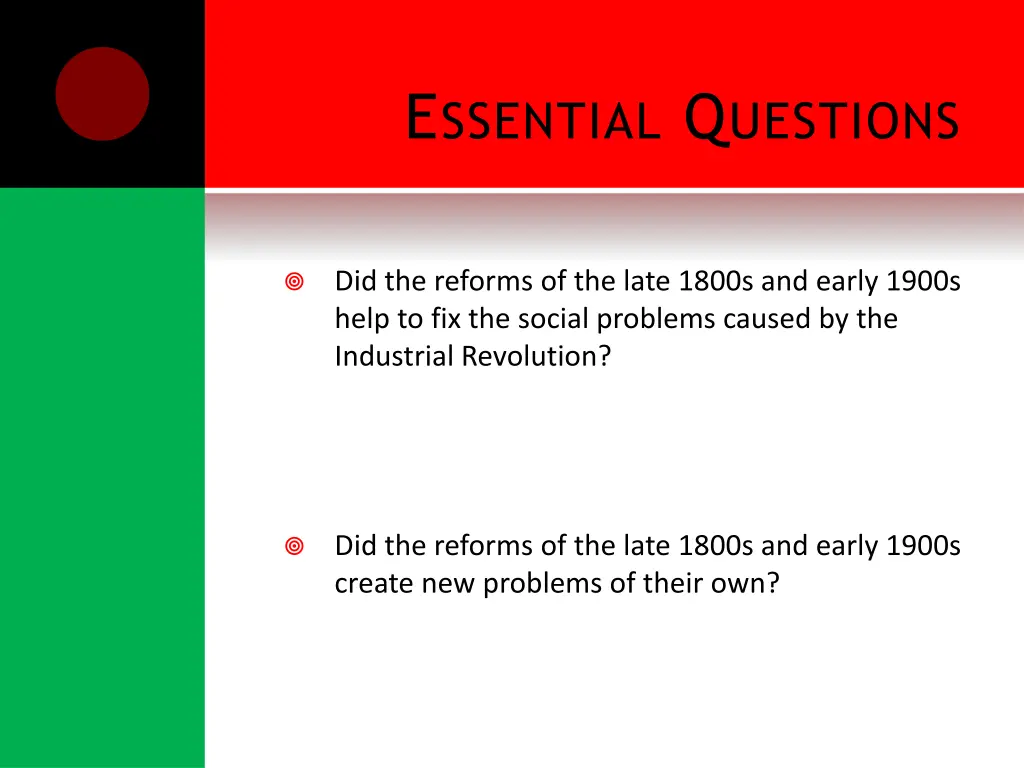
Reforms and Unification: Late 1800s to WWI
Discover how the reforms of the late 1800s and early 1900s impacted the social problems arising from the Industrial Revolution. Explore the complexities of Italian nationalism and unification, including the factors both for and against the movement, the steps taken towards unification, and the challenges faced along the way.
Download Presentation

Please find below an Image/Link to download the presentation.
The content on the website is provided AS IS for your information and personal use only. It may not be sold, licensed, or shared on other websites without obtaining consent from the author. If you encounter any issues during the download, it is possible that the publisher has removed the file from their server.
You are allowed to download the files provided on this website for personal or commercial use, subject to the condition that they are used lawfully. All files are the property of their respective owners.
The content on the website is provided AS IS for your information and personal use only. It may not be sold, licensed, or shared on other websites without obtaining consent from the author.
E N D
Presentation Transcript
ESSENTIAL QUESTIONS Did the reforms of the late 1800s and early 1900s help to fix the social problems caused by the Industrial Revolution? Did the reforms of the late 1800s and early 1900s create new problems of their own?
ON OUR WAY TO WWI M.A.I.N. Militarism Alliances Imperialism Nationalism
ITALIAN NATIONALISM AND UNIFICATION CHAPTER 25.1
FACTORS AGAINST ITALIAN UNIFICATION Italy divided into 9 states Pope wanted control of Papal states European countries didn t want a strong Italy
FACTORS FOR ITALIAN UNIFICATION Nationalism Good Leadership Cavour Brain Mazzini Heart King Victor Emmanuel II Leader Garibaldi Sword
STEPS TOWARDS UNIFICATION 1. Risorgimento resurgence Nationalist movement; wants unification 2. Carbonari coalmen Secret society dedicated to Risorgimento 3. Young Italy Movement Led by Giuseppe Mazzini the heart Mazzini and the Youth movement insisted that they did not want Neither pope or king but rather an Italian Republic .
STEPS TOWARDS UNIFICATION CONTINUED In 1848 Nationalist groups overthrew Austrian rule in north and seized Rome However, Nationalist gains were short lived
STEPS TOWARDS UNIFICATION CONTINUED Sardinia (strongest Italian state) 4. King Victor Emanuel II the leader Wanted end to Austrian influence in Italy Count Cavour (Prime Minister) the brain http://upload.wikimedia.org/wikipedia/commons/thumb/3/3f/Map_Region_of_Sardegna.svg/250px-Map_Region_of_Sardegna.svg.png Strengthened industry, economy & army Plotted with France against Austria
STEPS TOWARDS UNIFICATION CONTINUED At first, war w/Austria followed plan Sardinia and France fought Austria But France backed out B/c feared Austrian/Prussian Alliance Sardinia forced to end war w/ Austria Italian Independence seemed lost
STEPS TOWARDS UNIFICATION CONTINUED Giuseppe Garibaldi the sword & 1000 Red Shirts 5. Devoted to Italian freedom http://upload.wikimedia.org/wikipedia/commons/a/ac/Risorgimento%2C_Giuseppe_Garibaldi.jpg Led 1000 men and liberated 2 Sicilies Then marched to Rome But Cavour the brain stopped him Garibaldi didn t contest King Emanuel II was voted King of Italy
RIGHT LEGINTHE BOOTAT LAST A UNIFIED ITALY?
PROBLEMSW/ ITALIAN UNIFICATION Lack of experience w/ self-gov. Regional diff. Econ. Prob. (N=Industry; S=Agriculture) File:RegnoItalia1870.png Low stand. of living
Imagine that you are the Napoleon III and you have to decide whether or not to support Italy in their against Austria and for unification. Would you support the Italian Unification or not? Provide reasons why or why not. Consider the following for your answer: Expansion of France Prussian Response





